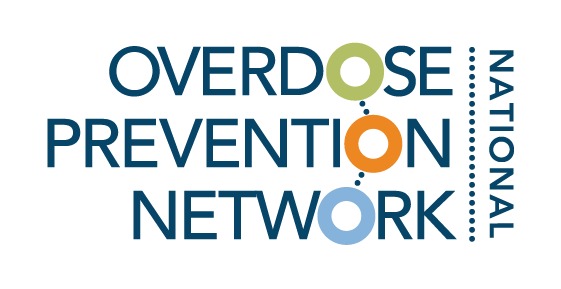
Resource Library
Toolkits, guides, and other resources vetted by experts in overdose prevention.
Filter by category and tags, or search by keyword (ex. COVID-19, harm reduction).
Addiction Language Guide
Spoken words cannot be un-said, and they have the power to build up person, or to destroy a person. When we choose to be compassionate, we become a part of the solution, giving an opportunity for others to be successful. This guide offers insight into how we can change the way we talk about addiction to create positive change.
SPACECAT Tool
Preventing adverse childhood experiences (ACEs), suicide, and overdose involves cross-sector collaboration focused on impacting risk and protective factors at the individual, relationship, community, and societal levels. The Suicide, Overdose, and Adverse Childhood Experiences Prevention Capacity Assessment Tool (SPACECAT) was created to help state, territorial, and local health agency staff identify opportunities to work at the intersection of these public health issues to maximize resources and impact.
CA Bridge 100: Build Your Foundation
This 'quick start' guide walks through exactly what your organization needs to do to get going and start saving lives now.
CHLP Judy Moore Remarks
Dr. Judy Moore offers advice on how we should proceed as public health leaders in the fight against COVID-19 and other health crises.
COPN Crafting a Persuasive Narrative, Part 1: Knowing your audience and messaging appropriately
Utilize this tool to develop a persuasive narrative of your coalition’s work and community impact.
COPN Build Your Own Narrative Worksheet
Utilize this tool to create an impactful narrative for crafting an impact message of your coalition’s work.
Fentanyl Frequently Asked Questions
This fact sheet answers frequently asked questions about fentanyl, buprenorphine, and the impact fentanyl has on overdose prevention efforts.
Words Matter - Terms to Use and Avoid When Talking About Addiction
This page offers background information and tips for providers to keep in mind while using person-first language, as well as terms to avoid to reduce stigma and negative bias when discussing addiction. Although some language that may be considered stigmatizing is commonly used within social communities of people who struggle with substance use disorder (SUD), clinicians can show leadership in how language can destigmatize the disease of addiction.
Principles of Harm Reduction
Harm reduction is a set of practical strategies and ideas aimed at reducing negative consequences associated with drug use. Harm Reduction is also a movement for social justice built on a belief in, and respect for, the rights of people who use drugs.
Harm Reduction Education On-Demand
Harm reduction strategies and tools should be accessible to everyone – regardless of location, time and or experience. National Harm Reduction Coalition offers a series of self-paced online learning modules that groups and individuals can complete on their own schedule and terms – anytime, anywhere.
Harm Reduction Issues: Overdose Prevention
The National Harm Reduction Coalition (NHRC) offers evidence-based strategies that reduce the risk of dying from an overdose. It aims to support people who use drugs, and the people who love people who use drugs, with information to mitigate the risk of an overdose and to stop an overdose while it’s happening.
Drug Facts
Most overdose deaths are preventable, but the "tough on crime" rhetoric of the decades-long drug war and the stigma associated with drug use have blocked the widespread adoption of life-saving overdose prevention and treatment policies. The Drug Policy Alliance (DPA) is leading the national effort to reduce drug overdose deaths by promoting sensible, evidence-based solutions at the state and federal level.
Your Brain On Fentanyl
This video offers a new perspective on the effects of fentanyl on the brain, and how fentanyl has changed the landscape of overdose prevention.
Project COPE: Community Overdose Prevention Education
Learn about New York's Project COPE, which focuses on harm reduction and how you can help prevent overdoses in your community.
Fentanyl Use and Overdose Prevention Tips
Many individuals consume fentanyl without their knowledge (because they do not realize that it is in a product they’re using), while others are intentionally using fentanyl because of its potency. It is partly responsible for the current overdose crisis in the U.S., combined with a lack of resources and the criminalization of people who use drugs. This fact sheet from the National Harm Reduction Coalition (NHRC) addresses some of the myths and lesser known facts about fentanyl.
Are Primary Care Providers a Good Fit for Treating Substance Abuse Disorders?
This video explains the importance of primary care in treating substance use disorder, and how providers can work to decrease the stigma around treatment services.
Preliminary Monthly Fatal Drug-Related Overdose Counts for June 2021 - May 2022
The CDPH Substance and Addiction Prevention Branch (SAPB) has recently updated this preliminary statewide monthly count data. It is presented by substance and posted on the Overdose Prevention Initiative (OPI) Data webpage. These counts may not represent all overdose-related deaths that occurred during the corresponding period. Subsequent versions of this data resource will also be available on the OPI Data webpage. The CDPH team continues to update the California Overdose Surveillance Dashboard with death data.
Fentanyl and Overdose Prevention Communications Toolkit
Use this toolkit from the California Department of Public Health (CDPH) to share information about the risks of fentanyl and how to prevent overdose.
California Healthy Kids Survey Data
The CalSCHLS system was created by the California Department of Education (CDE) to efficiently and cost-effectively provide school districts and their partner communities with quality local data which can be used to improve student academic performance and social-emotional, behavioral, and physical health of all youth. It assesses key indicators linked to success in school, career, and life.
Jennifer Aaker - Persuasion and the Power of Story
Jennifer Aaker studies happiness, and how stories can affect our happiness; she believes that stories are more meaningful–more memorable, more impactful, and more personal–than statistics alone. When used with statistical data, stories are an incredible persuasive tool that can help us as humans decide what to believe in a world that is otherwise incredibly over-saturated with information.



















